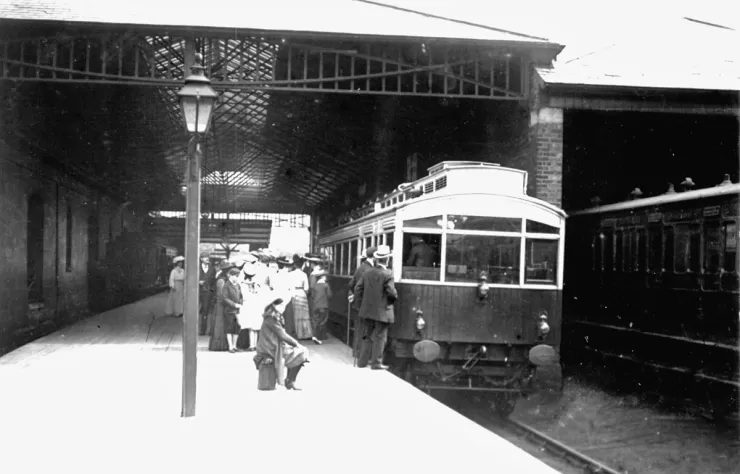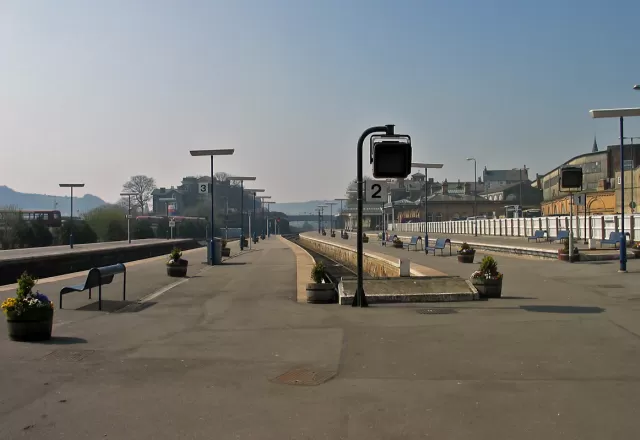Scarborough Station
The terminus of the York & North Midland Railway from York is Grade II listed.
At it's most expanded, there were five medium to large signal boxes, one at the station throat named "Scarborough", "Falsgrave" located by the junction of the line to Whitby, "Washbeck" between Londesborough Road Station and the locomotive shed, "Gasworks" south of the locomotive yard, "Gallows Close" where the goods yard was eventually established. All have now been closed with signalling now controlled by Seamer signal box, though Falsgrave survives as a Grade II listed structure.
1845
Following the completion of the line from York, on the same day the York & North Midland Railway's Pickering Station opened, so did Scarborough on Monday 7th July 1845. The original station building was designed by G.T. Andrews and had a wrought iron and glazed roof, 348 feet long by 88 feet wide in two spans.
1881
The original engine shed by this time had become inadequate and the North Eastern Railway built a roundhouse on a new site further south with a 44ft 8inch turntable and had capacity for 13 engines.
1890
With further increase in traffic, an additional eight road "straight" engine shed was built to house 24 engines and a new 50ft turntable was installed in front of the roundhouse.
1894
The station was expanded in stages for several decades. From 1894 goods traffic began to be moved from the station yard to Gallows Close, so that more platforms could be provided.
1904
The original goods shed, which was next to the station building became platforms 6 to 9 in 1904. Trains for the Forge Valley line often used these four platforms.
1908
Scarborough was probably best known for its large volume of excursion traffic, for which there was a dedicated second station at Londesborough Road opened on 8th June 1908. This was built on the site of the original engine sheds. It had one through platform 300 yards long and a bay platform 250 yards long. New signal boxes at Washbeck and Falsgrave both opened at the same time. Falsgrave replaced an earlier signal box dating from 1871 which was on the opposite side of the running lines.
1934
Platform 1 was extended to the front of Falsgrave signal box and platform 1a was built with specific use for Whitby services.
1963
The locomotive sheds at Scarborough were closed on 20th May 1963 as diesel motive power took over from steam. Although the shed had closed, steam locomotives bringing in trains from elsewhere continued to be serviced and turned in the yard until 1967 when steam was withdrawn from British Railway North Eastern Region.
The last train to depart from Londesborough Road Station was on 24th August 1963 and it was officially closed on 4th July 1966.
1981
Since the removal of servicing facilities in the late sixties, steam locomotives which had hauled charters had to run light engine to turn on the triangle at Filey. However with the closure of the holiday camp station in 1977, this facility was removed. A far more convenient solution was a new turntable fitted at Scarborough, which was trialled on 30th April 1981 and has been regularly used by charters ever since.
2010
Falsgrave Signal Box closed, with all signalling in the Scarborough district having moved to Seamer. The remaining gantry alongside the signal box was donated to the North Yorkshire Moors Railway and now stands at Grosmont Station, shortened and in use controlling access to the Middlesbrough to Whitby line.



